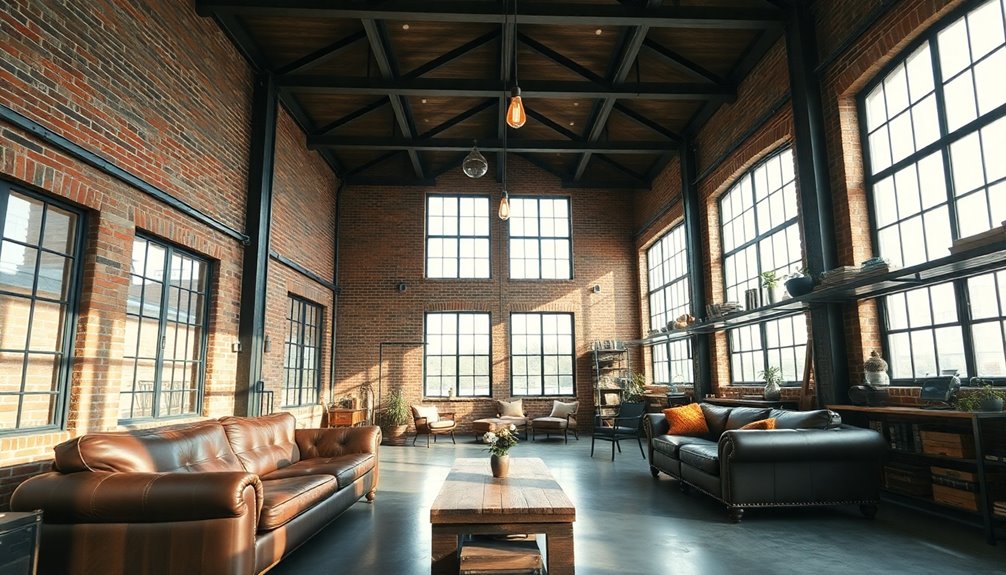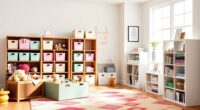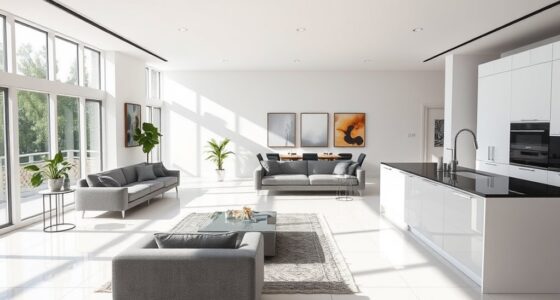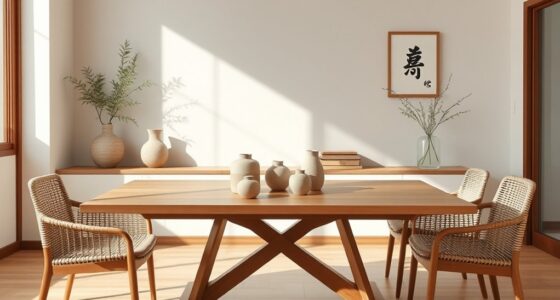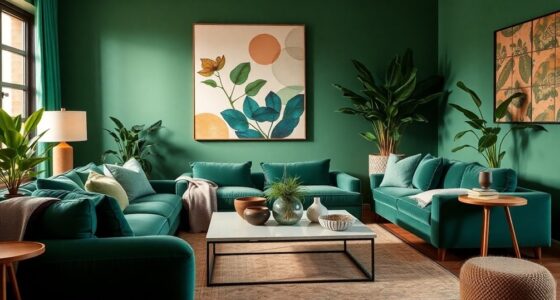If you're looking to embrace industrial style in your home, focus on open spaces with high ceilings and large windows. Use a neutral color palette to highlight raw materials like reclaimed wood and exposed metal beams. Incorporate functional decor that blends vintage and modern elements, and don't forget oversized statement pieces for focal points. Adding greenery in metal or concrete containers can enhance the look. Discover more ways to elevate your space in stunning detail.
Key Takeaways
- Embrace open floor plans with high ceilings to enhance the airy feel of industrial spaces.
- Utilize a neutral color palette of grays, blacks, and whites to complement raw materials like exposed brick and metal.
- Incorporate reclaimed wood furniture and accents for warmth and rustic charm amidst the industrial aesthetic.
- Maximize natural light with large windows, ideally featuring black frames, to create a bright and inviting atmosphere.
- Mix vintage and modern elements, such as retro furniture and contemporary fixtures, to add character and depth to your design.
Understanding the Basics of Industrial Style
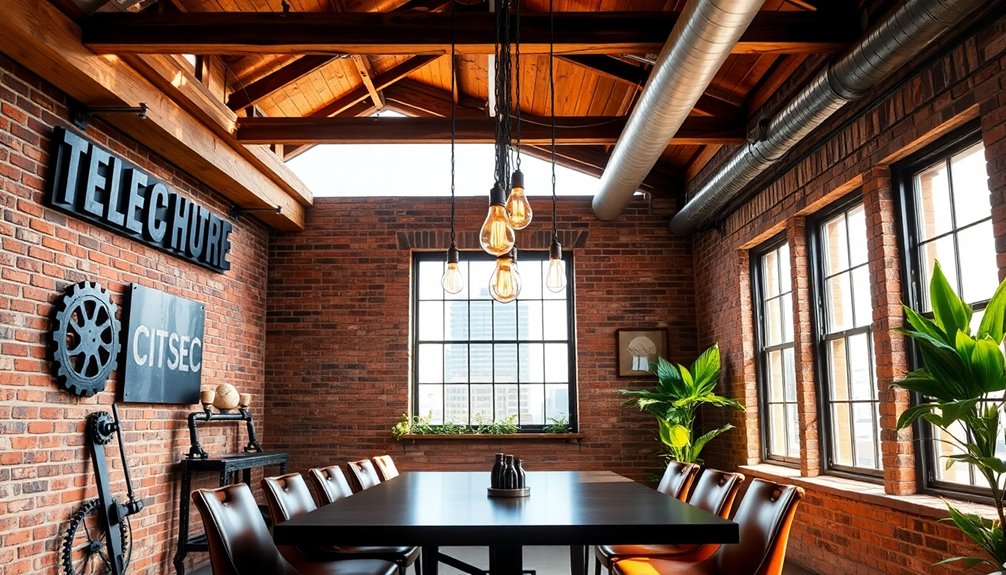
Industrial style interior design embraces a unique blend of raw materials and minimalist aesthetics that create a functional yet stylish environment.
You'll find exposed elements like brick walls and metal beams that highlight the space's character. The color palette typically features neutral tones—grays, blacks, and whites—that promote a calming atmosphere while emphasizing architectural elements.
Open spaces are essential, often showcasing high ceilings and large windows that invite natural light. Reclaimed wood adds warmth and a rustic touch, beautifully contrasting with sleek metal furniture.
Additionally, lighting plays an important role; bare lightbulbs and metal fixtures enhance the rugged feel of the design. By incorporating these elements, you can effortlessly achieve the essence of industrial style in your own home.
Key Elements That Define Industrial Design
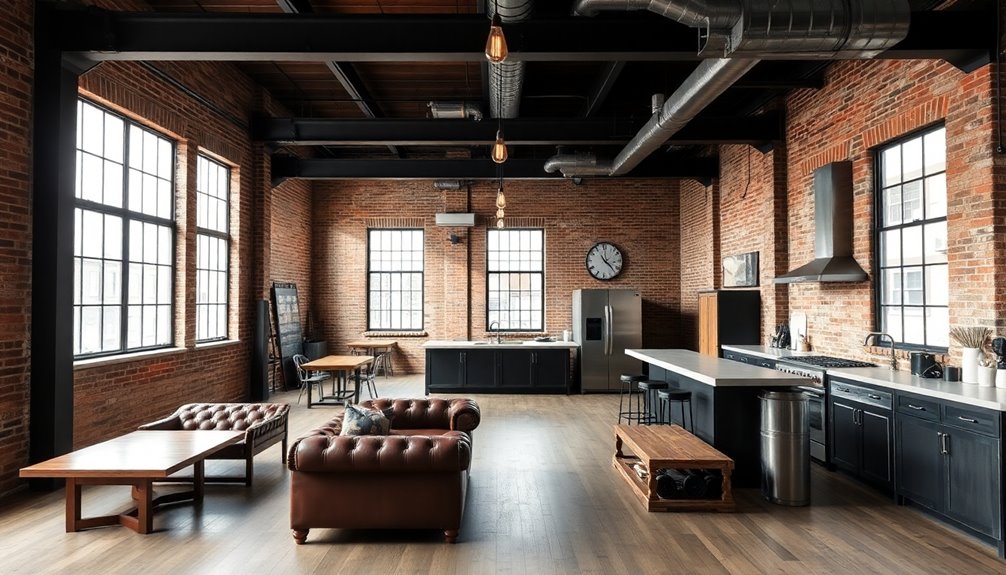
Exposed architectural elements are at the heart of industrial design, showcasing the raw beauty of a space. You'll often see brick walls, steel beams, and ductwork, which highlight the unique structure of industrial interiors.
A neutral color palette, with blacks, grays, and whites, creates a cohesive environment that emphasizes these features. Large windows with black frames flood your space with natural light, enhancing the spacious feel while maintaining an industrial vibe.
Incorporating reclaimed materials, like weathered wood and metal accents, adds character and authenticity. Functional decor takes center stage, focusing on utility and simplicity, while vintage elements provide a nostalgic touch.
Together, these components create clean lines and an inviting atmosphere that defines industrial design.
Practical Tips for Incorporating Industrial Style in Your Home

To create an inviting industrial space at home, focus on embracing open floor plans and high ceilings that promote a sense of airiness.
Use a neutral color palette dominated by whites, grays, and blacks to complement the raw materials like exposed brick walls and metal features.
Maximize natural light by opting for large windows with black panes, which highlight your space's architectural details.
Incorporate reclaimed wood and concrete floors to enhance the raw, unfinished look typical of industrial design.
Choose functional decor elements, such as metal shelving units and oversized furniture pieces, that emphasize utility while maintaining the industrial vibe.
This blend of style and function will create a cohesive and welcoming environment in your home.
Mixing Vintage and Modern Elements
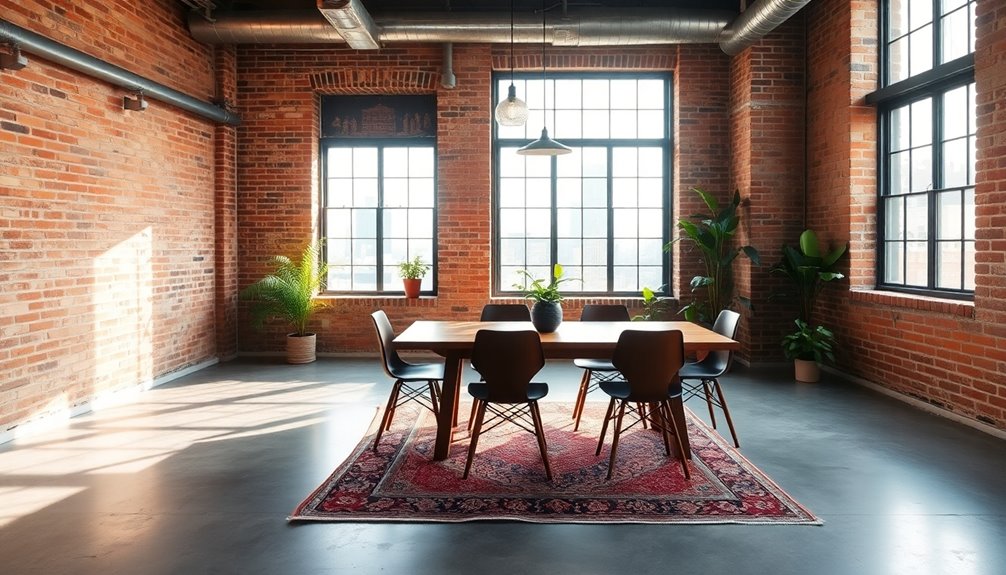
While you might think that vintage and modern elements clash, they can actually complement each other beautifully in industrial design.
By incorporating vintage furniture, like an antique metal chair or a reclaimed wood table, alongside modern elements such as minimalist lighting, you can create a striking contrast that enhances the industrial look.
Consider using statement art pieces with retro influences to add character and depth to your space.
Additionally, blending modern appliances with vintage accents in the kitchen—like stainless steel paired with retro-inspired cabinetry—offers both functionality and style.
Sourcing salvaged materials, like old factory windows or vintage light fixtures, can serve as focal points, bridging the gap between the past and present in your industrial style home. This approach not only adds unique pieces that serve a purpose but also enriches the overall aesthetic of your space.
Enhancing Your Space With Industrial Decor Accessories
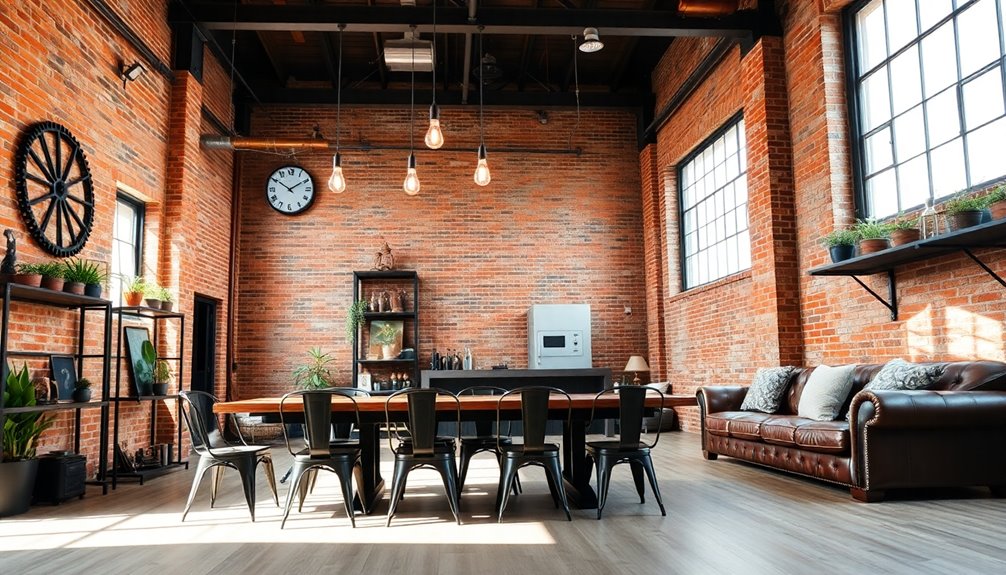
As you look to enhance your space with industrial decor accessories, consider how each piece can contribute to the overall aesthetic. Incorporating reclaimed wood furniture adds warmth and character while reinforcing industrial elements.
Utilize metal fixtures, like pendant lights and shelving units, to amplify that raw, utilitarian vibe typical of industrial design. Choose oversized statement pieces, such as large metal or wood sculptures, to create focal points in open spaces.
Layer textures with weathered leather throws, jute rugs, and linen cushions to soften the harshness of industrial materials while maintaining a minimalist look.
Finally, introduce greenery through potted plants or hanging planters in metal or concrete containers, adding a fresh touch that contrasts beautifully with the ruggedness of your industrial decor. Additionally, consider incorporating elements of modern farmhouse style, which can seamlessly blend with industrial decor for a unique aesthetic.
Frequently Asked Questions
What Is Industrial Style in Interior Design?
Industrial style in interior design embraces a raw, unfinished look that highlights a space's structural integrity.
You'll notice exposed brick, concrete, and steel, creating a bold and authentic atmosphere. The color palette leans towards neutral tones, allowing architectural features to shine.
Minimalism reigns with open layouts and large windows for natural light. Furnishings often combine reclaimed wood and metal, giving character while ensuring practicality.
What Style Goes Well With Industrial?
When you're looking to complement industrial style, consider mixing it with rustic elements like reclaimed wood and vintage accessories. This adds warmth and character.
Scandinavian design is another great choice, offering a minimalist and functional vibe. Mid-century modern furniture can also fit well, providing bold forms without overwhelming the space.
Finally, incorporating bohemian accessories, like woven textiles and vibrant patterns, can soften the starkness and create an inviting atmosphere.
What Color Is Industrial Style?
When you think about industrial style, you'll notice it primarily uses a neutral color palette. Shades of gray, black, and white dominate, often paired with earthy browns.
You can add accent colors in small doses for vibrancy, but the overall look remains muted. Metallic tones like copper or brass introduce warmth, while natural hues from wood and stone soften the rugged aesthetic.
This combination creates a cohesive, visually appealing environment.
Is Industrial Decor Still in Style?
Yes, industrial decor is still in style.
You'll find its appeal in urban living spaces, where open floor plans and minimalism attract modern homeowners. The trend toward sustainable materials enhances its charm, as reclaimed wood and repurposed elements are often used.
Plus, the blend of vintage and modern aesthetics keeps it fresh. With ongoing adaptive reuse projects, this design style continues to evolve, making it a favorite for both homeowners and designers alike.
Conclusion
Incorporating industrial style into your home can transform your space into a chic, urban retreat. By understanding the key elements and mixing vintage with modern touches, you can create a unique look that reflects your personality. Don't forget to enhance your design with carefully chosen decor accessories that echo the industrial vibe. With these tips, you're ready to embrace the raw beauty of industrial design and make your home a true reflection of your style.
